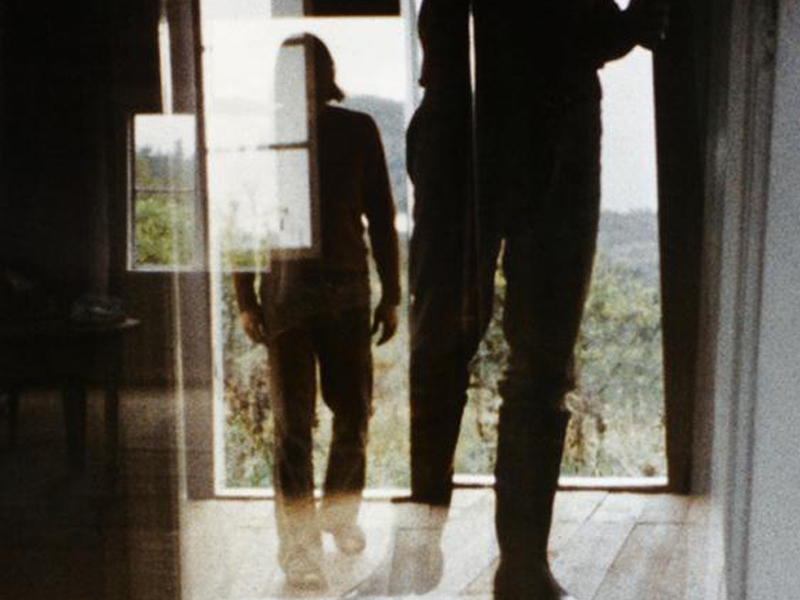
A balance of being enclosed in divided space.
Dore O.
“The sliding of facades and rooms, like scenery, through various axes, in various levels of multiple exposure together with entrances and exits of a person. Landscape exists only as a view through windows and doors. Individual shots stand in opposition to each other, modify themselves, or dissolve altogether into other pictures. Side by side with erupting pictures, images that collide and pile up, there are fragments of spaces/rooms and time sequences, attraction, fusion and repulsion of the various halves of the film image, with the purpose of creating a sensual topology. These are the main formal elements of the chosen film language. One picture devours the next.”
Dore O.
"Going beyond both the purely personal and merely formalistic, her work thwarts the logics of her contemporaries in its intimate and highly enigmatic poetics which are inextricably linked to a meta-filmic exploration of the moving image, the properties of celluloid film and of modes of perception. In her films, one can observe the constantly evolving examination of the geometric conditions of the projection surface through a filmic reality that is experienced and captured foremost as image(s) unfolding in multilayered tableaus that occupy a state in-between opaqueness and translucency, hypnosis and clarity. Rhythmic counter-plays between depth and surface, stillness and motion, planes and phantoms, multiple frames and picture-in-pictures all function "to create new architectures of old forms” (Dore O.). As in no other work within German experimental cinema, her striking films retrace an historical trajectory in which painterly, graphic and poetic conceptions of the medium are made-over into distinctly cinematic terms that eventually serve as a means for exploring new modes of subjectivity and states of consciousness. The highly musical and hypnotic nature of these pictorial stratifications, in combination with radical soundscapes, are carried over into her later works of the 1990s."
Masha Matzke1
« Après le très beau Blonde Barbarei, Dore O. reprend, en une oeuvre moins synthétique qu'antithétique, le thème de la claustration et de l’ouverture. Kaskara oppose la fenêtre issue, promesse d’espace et de paix, ouvrant sur la campagne et les multiples petits travaux d’une quotidienneté heureuse, filmée de l'intérieur et en couleurs -, à la fenêtre urbaine, fermée ou brisée, sans perspective, ne faisant que renvoyer le reflet des vitrines ou des autobus à d'autres fenêtres, fenêtres de HLM, fenêtres soupiraux, filmées de l'extérieur et en noir et blanc. Anthony Moore fournit là encore la bande-son, canon vocal très simple, se justifiant particulièrement dans la longue séquence où, sur l’écran scindé en deux, chaque moitié de l'image, jeu de reflets et de surimpressions, semble reprendre en écho l’autre. »
H. Fenster2
“Dore O. takes the original material for her films from her private domain, which includes far journeys through strange landscapes [...] Her films are not built on mathematical principles of structure; she creates a flow of image – multi-exposed landscapes and strange cut-in-image metaphors – as a poetic expression of her feelings. She works in the tradition of Brakhage in that she presents reality through the interpretation of her own emotions.”
Birgit Hein3
“Dore O. has become classic, and suddenly it turns out that her work has passed the various currents of time unharmed: the time of the cooperative union, the women's film, the structuralists and grammarians, the teachers of new ways of seeing ... It's time to proclaim loudly that Dore O.’s work is unique in German avant-garde film, since 'Jüm-Jüm' [...] she retains her independence also within independent film.”
Dietrich Kuhlbrodt4
Grand Prize at EXPRMNTL/Knokke Experimental Film Festival 1974-75
- 1Masha Matzke, “Figuration of showing – Figures of absence: The Films of Dore O.,” Greater London German Network, 1 August 2019.
- 2“Kaskara,” Light Cone.
- 3“Light Movement 26: Dore O.,” Light Movement.
- 4“Light Movement 26: Dore O.,” Light Movement.

